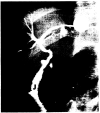Fifteen years of clinical liver transplantation
Abstract
Liver transplantation in humans was first attempted more than 15 yr ago. The 1-yr survival has slowly improved until it has now reached about 50%. In our experience, 46 patients have lived for at least 1 yr, with the longest survival being 9 yr. The high acute mortality in early trials was due in many cases to technical and management errors and to the use of damaged organs. With elimination of such factors, survival increased. Further improvements will depend upon better immunosuppression. Orthotopic liver transplantation (liver replacement) is the preferred operation in most cases, but placement of an extra liver (auxiliary transplantation) may have a role under special circumstances.
Figures




References
-
- Welch CS. A note on transplantation of the whole liver in dogs. Transplantation Bull. 1955;2:54–55.
-
- Moore FD, Smith LL, Burnap TK, Dallenbach FD, Dammin GJ, Gruber UF, Shoemaker WC, Steenburg RW, Ball MR, Belko JS. One-stage homotransplantation of the liver following total hepatectomy in dogs. Transplantation Bull. 1959;6:103–107. - PubMed
Publication types
MeSH terms
Grants and funding
LinkOut - more resources
Full Text Sources

